|
Manufacturers have made sparkling rhinestones since the late 1600s when glassmakers began creating leaded glass. Since then, the use of crystalline products has expanded from jewelry to fashion and home decor. In fact, rhinestone flatbacks can add sparkle to just about anything and everything. How Can I Use Crystal Rhinestones? Many people have seen rhinestone jewelry. You’ll find rhinestone earrings, bracelets, necklaces, and even tiaras crafted from these glittering fake gems. Most of the time, craftsmen use clear crystal in these pieces to imitate diamonds. Usually, it’s difficult to see the difference between real gems and a quality imitation without examining the piece. However, rhinestone jewelry is only one way to use crystal rhinestones. Modern popular applications also include formal wear like wedding dresses. Luxurious and romantic, glittering rhinestones can help you look and feel stunning. Yet, you can also attach rhinestones to everyday clothing to create a fashion style. Adding bling to jeans transforms them from every day to sophisticated chic. While a rhinestone tee shirt can proclaim your message or elevate your style with eye-catching sparkle and elegance. Footwear is another popular fashion item you can bling. You can add rhinestones to sneakers, boots, and sandals to create your unique fashion style. Furthermore, you can glue rhinestones to many other objects:
Some rhinestone artists have even blinged out cars! Best Glue for Rhinestone Flatbacks One of the supplies you’ll need when starting a bling project is rhinestone glue. You have several options to pick depending on your object. For instance, some materials have a smooth surface while others are porous. This difference in the surface will help determine the best glue to use to attach rhinestones. For example, manufacturers make many common objects from plastic, silicone, and vinyl. You may find key fobs, phone cases, and sunglasses made from these materials. Other materials with smooth surfaces include leather, metal, and ceramics. Yet, you can still glue rhinestones to these surfaces to create beautiful, unique pieces by using the right adhesive. Some popular choices include:
Some of these glues may have 2 parts requiring mixing before applying but all form permanent bonds with smooth surfaces. However, always read the manufacturer’s instructions to determine if the glue will work with your bling project. Are There Different Types of Rhinestones Flatbacks? Usually, manufacturers use one of 3 materials to make rhinestones: plastic, glass, or crystal. You can find flatbacks in any of these materials. However, not all glues are suitable for plastic rhinestones as some adhesives can cause discoloration. Moreover, the amount of sparkle will vary with each kind. 1. Plastic These are the least expensive type of rhinestone with the least amount of sparkle. Manufacturers either inject or compress plastic into molds to form these embellishments. You’ll find several variations of plastic rhinestones:
2. Glass Generally, glass rhinestones offer more sparkle and brilliance than plastic embellishments with brighter colors and sharper edges. Glass is also more durable than plastic and less prone to scratches. 3. Crystal Although crystal is a type of glass, it is clearer with more sparkle due to the addition of certain compounds. Crystal rhinestones are the highest quality material producing the greatest sparkle. FAQs About Rhinestone Flatbacks Creating rhinestone projects is an exciting and enjoyable way to add glitter and sparkle. Below, we answer a few commonly asked questions about flatback rhinestones. How Do I Determine the Perfect Rhinestone Size for My Bling Project? Rhinestone sizes can be confusing! Typically, manufacturers and retailers list rhinestones in stone size or “ss”. Generally, the larger the number, the bigger the rhinestone. Most rhinestone sellers have the accompanying millimeter size listed along with the ss size. What Is the Best Brand of Crystal Rhinestone Flatbacks? A few years ago, Swarovski was the premier name for rhinestones. However, in 2021, the company removed its rhinestones business from general retail to work solely with luxury brands. One Swarovski alternative is the Preciosa brand with over 500 years of crystal-making tradition. Preciosa’s Maxima line offers a lead-free crystal with a refractive index equal to leaded crystal. Plus, Maxima has 15-18 pristine cut facets in a multitude of colors. Where Can I Buy Rhinestones Online? Since 2011, Rhinestones Etc. has been supplying rhinestones to dancers, skaters, crafters, and businesses. We offer competitive pricing, excellent customer service, and very fast processing times on Preciosa Maxima and PriceLess Rhinestones. Browse our online store to find the perfect crystal rhinestone color for your project.
0 Comments
Blinged out tee shirts are a hot fashion trend. Moreover, you’ll find plenty of YouTube videos and blogs describing how to make your own. However, while many DIYers explain the method of attaching rhinestones, many bypass the designing process. We offer a free rhinestone template to create a beautiful, bedazzled shirt. For beginners, using a template is a very convenient tool for showing the placement and quantity of crystalline embellishments. How To Use Our Free Rhinestone Template You can use our free rhinestone template to create a solid heart shape. This free template works with any size rhinestone. The shape will be either smaller or larger depending on your choice of rhinestone size. For example, Preciosa Maxima Rhinestones 20ss measure 4.6 mm. Thus, your finished heart design will extend to about 101 mm by 110 mm (about 4 inches by 4.5 inches). Using size 16ss ( 3.8 mm) will give you a finished design of 83 mm by 91 mm (3.25 by 3.5 inches). Moreover, your finished rhinestone heart will also be larger if you leave space between the rhinestones. To recreate the heart design, simply count the red dots to see how many rhinestones you’ll need. For the pink dots, you have 2 choices. You can use the same size as the red dots or choose one size smaller for a more rounded appearance. Hotfix Vs. Flatback Rhinestones? With this type of rhinestone design, you can use flatback or hotfix rhinestones. Comparatively, using hotfix rhinestones to make an iron on transfer may be a bit easier than gluing flatbacks. If you choose hotfix rhinestones, you’ll also need transfer paper. Rhinestone transfer paper has 2 pieces, a non-sticky opaque piece and a clear sticky sheet. To use transfer paper with this design, print out our template. You may have to enlarge the size so that the dots match the size of the rhinestones. Peel off the clear part of the transfer paper and lay it on top of the template, sticky side up. Place the rhinestones facet-side down in the dots on the sticky part of the transfer paper, filling in the heart shape. To glue flatbacks to fabric, we prefer Gem-Tac for its ease of application. For this method, you use the template as a guide. Begin your design by gluing the rhinestones along a center line, horizontally or vertically. Moreover, you may want to use a ruler to keep your lines straight. If you have a Cricut machine, you can make holes for rhinestone placement. Of course, you’ll want to remove the background dots first. Additionally, you’ll need to convert it into an SVG file format version. Creating Your Rhinestone Design While using a preformed template offers a starting point, you may want to create different designs. You’ll find several ways of design creation from using Cricut machines to computer programs. As you begin your journey with rhinestone design, you can start with a simple method to save on costs. We offer several free rhinestone template designs that you can download. Furthermore, you can read about how to make a simple rhinestone template using a punch tool. For this project, we used Photoshop to convert a simple image into a color dot pattern. Spiral Betty is a free program that can also turn an image into dots. Choose Quality Rhinestones for Your Bling Project Although you don’t need to choose the most expensive rhinestones for your bling project, avoid using cheaply made embellishments. Often, poorly made rhinestones will have color variations for the same hue. They may contain bubbles within their structure giving the embellishment a cloudy appearance. Comparatively, cheaply made rhinestones won’t have much sparkle or shine as compared to higher-end embellishments. For over 10 years, Rhinestones Etc. has been supplying dancers, skaters, and businesses with high-quality crystal rhinestones. We offer super-fast processing times with most orders shipping out the same day. Plus, we offer a large selection Preciosa Rhinestones as well as the cost-effective PriceLess brand. Browse our online store to find the perfect color for your next bling project.
Brand-name Preciosa recently launched new crystal innovations, Mad for Sparkle SS 2025. Taking inspiration from the classic story, Alice in Wonderland, the manufacturer created new rhinestone colors. These hues invoke the magic of sparkle with the whimsy of the classic tale. 
1. Acid Yellow This luminous hue of yellow follows the trend of “dopamine dressing”. The term reflects the joy that arises from wearing certain colors. Invigorating and energetic, acid yellow makes a bold statement.

3. Rose Peach This rhinestone color begins with a bold pink, but the manufacturer softens it with warm undertones of peach. Its cheerful sparkle is often associated with romance reminiscent of roses of the same shade. These innovative colors give designers new hues for self-expression and statement-making shine. Offering an extensive palette of hues, these rhinestone colors are now part of Preciosa’s extensive portfolio of colors. A Review of Other Preciosa Rhinestone Colors Typically, rhinestone color offerings vary by manufacturer. Preciosa, the oldest manufacturer of crystalline products, offers a large selection divided into categories. Crystal is the original rhinestone designed to mimic diamonds. Although a clear embellishment, its silver backing gives it a light silver presentation. Next are the standard colors. Rhinestone manufacturers add minerals to the crystal to create a product similar in color to real gemstones. Ruby, emerald, and topaz are some colors that fall into this category. Many manufacturers also produce AB/Shimmer AB colors. These rhinestones begin with crystal or a standard color, but the manufacturer applies a special iridescent coating. The final result? A rhinestone reflecting different colors of the rainbow while the original color shines through. Preciosa offers Shimmer AB colors, a lighter coating than AB allowing more of the original color to sparkle. Finally, you may also find color changing or unique color rhinestones that fall into the coated color category. These may have a surface or backside coating to give them a unique shade. Some examples produced by Preciosa include neon colors as well as metallic colors like Rose Gold. FAQs About Rhinestones Are you shopping for bling supplies and have some questions about rhinestone colors? Below we answer a few commonly asked ones. Do Manufacturers Have Different Price Structures for The Color Categories? Many rhinestone manufacturers charge more for AB or coated colors and some charge the same as standard colors. Usually, this is due to the difference in manufacturing processes. For many quality brands, unique colored rhinestones cost more to create than standard colors. Are All Colors Available in Hot Fix Rhinestones? Hot fix rhinestones are crystals with glue on the backside for heat application. The availability of color selection also depends on the manufacturer. Preciosa offers a large selection of colors of heat activated rhinestones. We’ll be adding these to our store soon! Can I Mix Standard and AB Colors on My Bling Project? Absolutely! Using both the standard and AB rhinestone can add movement and depth not achieved by a single color. Plus, AB color rhinestones appear to sparkle more because the coating increases the visibility of the facets. Rhinestones Etc. has the new exciting colors from Preciosa along with many other fun colors. We offer fast processing times, great customer service, and competitive prices. Browse our online store and find the perfect hue for you. The aurora borealis is an atmospheric phenomenon producing a spectacular display of dancing lights in the northern night sky. While green is the most predominant color, you may also see red, violet, yellow, blue, or purple hues. This natural exhibition of color inspired the creation of AB rhinestones. The Impact of Christian Dior on AB Rhinestones You can never really go wrong if you take nature as an example. - Christian Dior Christian Dior was a Parisian designer who opened his own fashion house in 1946. His style revolutionized women’s clothing during the post-war era. To accessorize these more feminine styles, Dior also began creating jewelry. Ultimately, his interest in fusing nature with fashion led to a collaboration with the famous rhinestone manufacturer, Swarovski. This partnership produced the first AB rhinestones, named after the aurora borealis. Swarovski coated clear crystal to create a rhinestone with sparkling iridescence colors reminiscent of the Northern Lights. A completely new innovation, aurora borealis or AB crystals became very popular with many other jewelers. This popularity led to rhinestone manufacturers offering other Aurora Borealis colors. Today, you’ll find almost as many AB colors as regular rhinestone colors. Distinctions Between Rhinestone Colors Typically, when shopping for rhinestones, you’ll find plenty of color choices. In addition to creating standard and AB colors, you may also find that manufacturers use the term “special coatings”. These types of rhinestones have a surface or backside coating to create stunning new hues. For example, metallic-looking rhinestones shimmering in gold, silver, or bronze usually fall into this category. Moreover, the vivid and vibrant colors of neon rhinestones often have a special coating to achieve their electrifying hue. Generally, manufacturers group colors into several categories:
However, just like shades and tints of colors can vary between brands, so can the coating. Some rhinestone manufacturers add a light layer often referred to as “shimmer AB”. Manufacturers refer to the heavier coating as simply “AB”. Generally, the heavier the AB coating, the less of the original color shines through. Furthermore, the chemical composition of the manufacturer's coating will also impact the rainbow effect. Finally, depending on the rhinestone manufacturer, the price structure for each color category may be different. Often, brand-name companies charge more for AB and coated colors, while the standard colors are less expensive. Choosing a Rhinestone Color for Your Project Using AB rhinestone colors can add depth and movement to your bling project. Typically, these appear more sparkly than the standard colors because the coating intensifies the visibility of the facets. Combining both the standard and AB colors can add a new dimension to make your bedazzled item stand out. Today, AB colors are very popular for costume embellishment in the dance and skating world. While the original hue shines through, movement results in an explosion of color. Usually, lighter colors tend to have more of a rainbow effect sparkling with yellow, pink, purple, red, or blue. While dark colors take on a metallic, bluish-green color. A perfect example of this is the Jet AB rhinestone. Of course, choosing colors is a personal preference. Whether you want to blend hues or have a pop of color, aurora borealis colors can add to your project. Are you ready to begin working with AB color rhinestones? Rhinestones Etc. has a huge supply of crystal rhinestones in stock. We carry both the premier Preciosa Maxima and the cost-effective PriceLess brands. With fast processing times, competitive pricing, and excellent customer service, we want to be your source for bling. Browse our online store to find the perfect rhinestone size and color for your next project. Sometimes people use certain words interchangeably when the words mean two separate things. And if you’re not familiar with the terms, you can get confused pretty easily. For example, when buying rhinestones, is there a difference between flat back and glue on rhinestones? The Chaton, the World’s First Cut Crystal Rhinestone In the world of bling, several types of rhinestones can have a flat back: sew-on, hot-fix, and glue on. All these embellishments have a backside that is smooth without peaks or depressions. However, manufacturers only term glue on rhinestones as flat back or non-hot fix. Before we talk about the differences in these rhinestones, let’s look at a bit of crystal history. Originally, glassmakers created rhinestones to replicate gemstones, particularly diamonds. When found in nature, one of the most common shapes of a diamond is an octahedron. This is an 8-sided figure that looks like 2 pyramids connected at the base. Early gem cutters didn’t have the technology to cut multiple facets as they do today. Instead, jewelers would smooth these natural facets to enhance the reflection of light. The chaton, the world’s first patented cut crystal stone, copied this shape. At this time, artisans mainly used rhinestones for jewelry making. However, the fashion industry would soon begin using these sparkling crystals. Chiefly, the World Exhibition in France in 1878 created a new demand for “diamond jewels” for clothing. Thus, manufacturers began to create the flat back rhinestone. Sew-On, Hot Fix, and Glue On Rhinestones Today, manufacturers still create the pointed back chaton. These can be either foiled like flat backs or unfoiled like diamonds. As mentioned earlier, you’ll also find sew-on, hot fix, and flat back rhinestones. While all have a smooth back, the attachment methods differ. Generally, sew-on rhinestones have holes to sew the embellishment into place. Most have two very small holes located near the edge. One, the Lochrosen, is sort of like a crystal sequin with a hole in the middle of the crystal. Another option is the hot fix rhinestones with a heat-activated adhesive on the flat side. If you properly apply it, the glue forms an extremely strong bond that you can wash. To apply, you need a heat press, hot fix applicator, or non-steam iron heated to 250 - 340 degrees F. Often, you may see glue on rhinestones referred to as “non-hot fix” or simply flat backs. While gluing is the preferred method of attaching this type of rhinestone, it’s not the only technique. You can also attach these embellishments by using either rim or Tiffany metal settings. Which Is The Best Type of Rhinestone For Your Bling Project? Usually, the type of bedazzling project and the material you’re using will help you choose the best rhinestone. For example, western wear garments typically use leather, a tricky material for gluing rhinestones. Using metal settings in this instance will result in a very secure hold. Some shoes and handbags may also require metal settings. Generally, flat back rhinestones are more popular among the DIYers. In addition to a cheaper price, not all materials, like tightly woven fabrics, are suitable for hot fix applications. Moreover, the gluing method is a bit easier for first-timers. Plus, you usually have more of a selection of colors, sizes, and shapes with flat backs. If you’re looking for a large selection of colors and sizes in flat back rhinestones, trust Rhinestones Etc. Since 2011, we’ve been supplying quality embellishments with fast shipping, competitive pricing, and excellent customer service. Browse our online store to find the perfect hue for your bling project! Most rhinestones have a silver coating on the underneath part of the embellishments. This foiled backing is what helps reflect light out through the embellishment to enhance its optical performance. So, when you see unfoiled crystal AB rhinestones for sale, you may wonder about its practical use. Foiled Rhinestones Followed Gemstone Jewelry Making Ultimately, you must follow the history of jewelry and glassmaking to understand modern rhinestone manufacturing. From earliest times, artisans sought precious stones to create beautiful pieces of jewelry. In particular, jewelry makers prized a form of quartz found along the banks of one of Europe’s rivers. When these “Rhine stones” became depleted, artisans sought to recreate these and other more expensive precious stones. Moreover, as technology evolved with gem cutting, glassmakers imitated these processes to create similar effects. The first artisan to apply gem-cutting techniques to glass was Caspar Lehmann in the late 1500s. Another breakthrough occurred in 1674 when a glass maker introduced lead as an ingredient in production. George Ravenscroft’s new commodity, crystal, was denser and clearer than glass. It also had a higher refraction index with more sparkle and brilliance than glass. Both Lehmann and Ravenscroft paved the way for the world's first cut crystal stone, the chaton, in 1715. While these early rhinestones were pretty, they still lacked the sparkle and brilliance of today’s embellishments. So, jewelers began experimenting with reflecting light out of the crystal. Taking a cue from mirror manufacturing, artisans began adding a foil backing. Finally, the faceted top with a foiled underneath achieved an effect very similar to diamonds. Unfoiled Crystal AB Rhinestones Lack A Silver Backing With advancements in technology, manufacturers have developed new and innovative rhinestone colors. Sometimes, these colors use a different color backing than silver to achieve their desired effect. For example, to achieve the eye-popping color of neon, these rhinestones don’t have a silver backing. However, unfoiled rhinestones are transparent with no backing at all. Do unfoiled rhinestones glitter or glimmer at all? Typically, when light hits a rhinestone, some of the light enters the rhinestone. It reflects off the silver backing and then exits the embellishment creating sparkle. Of course, this reflected light does create a good portion of the rhinestones’ glittering brilliance. However, light also reflects off the smooth surfaces of the facets cut into the rhinestone. Generally, crystal AB foiled rhinestones will pick up the color of the underneath fabric. However, unfoiled crystal AB rhinestones will absorb most of the light creating a more elegant and subtle sparkle. FAQs About Rhinestones Ready to begin your bling project but have more questions about rhinestones? Below, we answer a few commonly asked questions. If you have others, please feel free to contact us via our online form. Does The Type of Rhinestone Matter? Ultimately, this depends upon your project. You’ll find many rhinestones manufacturers creating acrylic, glass, or crystal rhinestones. Moreover, manufacturers cut and arrange facets differently. All these factors will affect the rhinestone’s sparkle. What Is the Best Rhinestone Glue to Use? It’s the texture of the surface dictates the best rhinestone adhesive. For example, metal or leather has a smoother surface than fabric. Usually, a rough surface creates additional surface area to create a stronger bond. When gluing to fabric, you want a glue that’s washable and dries clear. Some popular choices include Gem Tac, Jewel It, and API Crafters Pick. Where Can I Buy Rhinestones? For unfoiled crystal AB rhinestones and other rhinestone colors, shop Rhinestones Etc. Since 2011, we have been supplying quality embellishments with fast processing times, competitive pricing, and great customer service. Moreover, we have an extensive inventory of the premier brand, Preciosa. Made from the finest crystal, this company has over 500 years of crystal-making history. Additionally, we carry the beautiful, economically priced PriceLess Rhinestones. This is a sparkling crystal embellishment with a large variety of colors. Browse our online store to find the perfect rhinestone color for your project. Usually, most people use round rhinestones for their bling projects. Available in many sizes and colors, this shape offers the greatest versatility. Yet, many rhinestone manufacturers make other rhinestone shapes. With different facet arrangements, other cuts can enhance your design. Common Rhinestone Shapes Today, like diamonds, the round shape is the most popular rhinestone shape. However, other interesting cuts are also available. Whether you’re creating jewelry, bedazzling clothing, or some other project, different shapes can add another dimension to your creation. From classic to novel cuts, unique shapes have varying faceting patterns that react to light differently. 1. Oval This shape resembles the round rhinestone but offers the illusion of a larger crystal. Its rounded curves with elongated dimensions can create a unique look to your design. 2. Pear Another shape that adds the illusion of length is the pear. With a sharp top point and rounded lower half, this shape mimics a teardrop. 3. Square With parallel faceting, this elegant shape allows light to disperse in unique ways. Some manufacturers will produce this shape with sharp lines and angles. Others round the curves to create the cushion cut so named because it looks like a pillow. 4. Navette Sometimes called a marquise, the navette cut is oval shaped with both ends pointed. This shape offers maximum sparkle and reflection of light. 5. Baguette A slender rectangular shape, the baguette offers a modern and contemporary look. Its shape adds visual interest to any design especially when paired with a round shape. 6. Rhombus The rhombus is a diamond-like shape with sharp angles and lines. With a multi-faceted surface, it flashes beautiful brilliance. 7. Triangle Another angular rhinestone is the triangle. This unique shape is especially striking when paired with square or baguette rhinestones. 8. Rivoli Although a round rhinestone, a Rivoli has vertical facets from the edge to the center with a pointed top. Originally, manufacturers created a point on both sides. However, today you’ll also find the flat backed foiled Rivoli. Designing With Geometric Rhinestone Shapes To understand how manufacturers developed the various shapes, you need to know the history of glassmaking and gem cutting. Beginning in the late Renaissance Period, artisan glassmakers began to cut crystal to replicate more expensive gemstones. These artisans attempted to copy the facet arrangements and shapes of gemstones to optimize light reflection and refraction. During the Art Deco (1919 to 1939) period, gem cutters introduced the baguette, triangle, and square gemstone shapes. These new cuts offered contrasting forms of geometric patterns in jewelry making. Of course, the glassmakers copied these cuts in rhinestone manufacturing to offer different movements of light. Moreover, as gem cutters experimented and introduced new techniques, glassmakers imitated them. Today, rhinestone manufacturers continue to create new and innovative shapes. You’ll find acrylic, glass, or crystal rhinestones in an assortment of geometrical shapes. FAQs About Rhinestone Shapes Using different shapes can add new dimensions to your bling project. Geometric shapes are visually appealing and add a layer of interest to dance customers, skating wear, shoes, or jewelry. Have some other questions? You can contact us here. Below, we answer a few commonly asked ones. What Rhinestone Colors Are Available in the Various Shapes? Typically, you can find virtually any round rhinestone color. However, the availability of colors in shapes depends upon the manufacturer and the shape. Are Different Quantities Available? Generally, the quantities offered depend on the retailer. Often, stores will buy in bulk and sell rhinestones in smaller amounts. Where Can I Buy Rhinestones? Rhinestones Etc. has been selling quality embellishments since 2011. We have fast processing times so you get your stones quickly. Browse our online store and find the perfect shape and color for your project. Types of Rhinestones - Choosing the Best for Your Project Rhinestone items are in high demand. However, many of these goods are very expensive. Perhaps you’ve decided to try creating a bedazzled project. Yet, when you try to buy crystals, you find many different types of rhinestones. Should you buy the cheapest or most expensive and what’s the difference between them? What Is a Rhinestone? Before we talk about the different types of rhinestones, we need to look at a bit of history. Since ancient times, people gathered pretty rocks, fashioning talismans and later jewelry. One of the most abundant minerals on Earth also forms some of the prettiest stones. Depending on the elements that mix with quartz as it forms, the result is one of these gemstones:
Due to its characteristics of durability and variety of colors, jewelers prized quartz, especially clear quartz. One particular form of clear quartz mixed with lead during its formation, giving it glittering properties. Gem collectors found these rocks only in one particular place, along the banks of the Rhine River. Sadly, these natural rhinestones became depleted. Interest in manufacturing a replacement for natural rhinestones took root in the middle of the 1500s. Although bead glassmaking had been around since the height of the Roman Empire, enthusiasm for glassmaking had waned. However, during the 16th century, people began to desire beaded jewelry. With an abundance of natural resources, glassmaking became a major industry in Bohemia. Also during this time, jewelers were experimenting with gemstone cutting. Through cutting and polishing techniques, gem cutters labored to achieve the perfect display of color and visual effects. One particular gem cutter, Caspar Lehmann, was the first to adapt the tools and techniques of gem cutting to glass. Other artisans adopted these methods, paving the way for a patent on the world’s first cut crystal stone in 1715. Later on, artisans found ways to color the crystal glass. Additionally, they added a metal powder backing for greater light reflection. One Bohemian glassmaker patented an electric cutting machine to cut crystals faster and more precisely. This artisan moved to Austria and began his own company, Swarovski. Today, you’ll find many companies making rhinestones from 3 primary materials, plastic, glass, and crystal. What Are the Different Types of Rhinestones? Ultimately, the substance the manufacturer uses to create their product will determine the brilliance and shimmer of the embellishment. Generally, each material and manufacturing exhibits different clarity, dispersion, and refraction properties. Together, these characteristics create the sparkle and scintillation of the rhinestone. Another factor affecting the sparkle of the rhinestone is the number of facets. A facet is a small, polished, flat surface cut into the rhinestone to create light movement. The greater the number of facets, the greater the sparkle. Primarily, the manufacturer's choice of material will influence the arrangement and quantity of these surfaces. For example, crystal is denser than glass allowing manufacturers to cut more facets. Often, the scope of your bling project will help you decide which is the best type of rhinestone: 1. Plastic Using synthetic or naturally occurring materials, manufacturers form different types of plastics. Some of these plastics are suitable for rhinestones:
Manufacturers will either inject or compress the material of choice into their molds. Usually, these are the least expensive rhinestones, producing the lowest amount of sparkle. 2. Glass A higher quality of rhinestones is glass. The manufacturer may either cut or mold this type of rhinestone. Glass rhinestones produce a brilliant appearance and more sparkle than plastic rhinestones. Plus, they’re a cost-effective alternative to crystal. 3. Crystal Generally, manufacturers add lead oxide during glass production to form crystal. This new product is denser, stronger, and clearer than simple glass. With higher refractive and dispersion indices, crystal rhinestones produce the most sparkle. However, many rhinestone manufacturers have moved away from using lead due to health concerns. Today, brand-name rhinestone producers use barium, zinc, or potassium oxide instead of lead. Choosing From Among the Types of Rhinestones Usually, within these 3 classifications, you’ll find many different grades of each type. Manufacturers use different processes for production resulting in varying grades. So, within the crystal category, you can find rhinestones with 10, 12, or 15 facets. Furthermore, the availability of rhinestone sizes or colors varies between manufacturers. All of these factors can influence which is the best rhinestone for your project. Certainly, sometimes only the very best will do. For those times, we recommend the Preciosa Maxima brand. With over 500 years of tradition, this brand offers unbeatable sparkle in 100 colors. Moreover, Rhinestones Etc. has an extensive inventory of these rhinestones in stock and ready to ship. Since 2011, we have been providing customers with outstanding customer service and competitive pricing. Browse ouronline store and if you have any questions, send us a message. Rhinestones add an eye-catching sparkle to wherever you add them. Moreover, you’ll find tutorials on bedazzling virtually anything and everything fromclothing to shoes and accessories. When shopping for rhinestones, most likely you’ll find the circular flat back crystal to be the most widely available. However, manufacturers make many more shapes than just round rhinestones. Common Rhinestone Shapes Of course, all manufacturers differ in their product offerings. Some only make round rhinestones while others create all kinds of shaped crystal rhinestones. Generally, among rhinestone companies, you’ll find these common shapes:
Typically, manufacturers offer limited colors for glue on crystals in these different contours. Sometimes, you’ll only find sew on crystals in a particular shape. Usually, the round rhinestone offers the most color and size options than any other shape. Furthermore, different crystal shaped rhinestones are generally more expensive than the circular option. Glassmakers Imitated Diamond Cutters The history of manufactured rhinestones closely follows the development of cutting precious gems. After all, glassmakers created rhinestones to mimic more expensive stones at a lower price. Their inspiration came from the banks of the Rhine River hundreds of years ago where people found a unique form of quartz. Quartz is very abundant on earth producing several gemstone colors including Amethyst, Citrine, and Chalcedony. Although you can find quartz in many areas of the world, these particular pieces blended with lead to give them unique glittering properties. Over time, people depleted this natural resource, yet still wanted these sparkling stones. Glassmakers strove to fill this void. To the east, Bohemia had an abundant supply of raw materials and craftsmen. Artisans began turning out beautiful glass beads bringing fame and prominence to the area. These glassmakers also began testing different ingredients to create a clearer final product. This new form of glass, crystal, was denser allowing more precise cutting. Also during this time, stonecutters began experimenting with facet arrangement on diamonds. They learned that the cuts or facets on a diamond helped control and direct rays of light. Around this time, the brilliant round cut diamond, with its numerous facets, made its appearance. This particular diamond cut optimized light reflection and refraction as well as exhibiting the most brilliance. Glassmakers took notice. In 1715, the world’s first cut crystal stone, the chaton, received a patent. As technology advanced, so did these “pierres de strass” or rhinestones. Artisans found new ways to color the glass and even added a mirror backing for greater light reflection. New cutting machines, like Daniel Swarovski’s electric machine, meant artisans could cut crystal faster and more precisely. Round Rhinestones Are the Most Popular Shape Today As time passed, rhinestones moved from jewelry to fashion. The 1878 World Exhibition in Paris, France, created a new demand for these “diamond jewels” that dressmakers could sew onto clothing. Designers like Coco Chanel began incorporating rhinestones into their fashions. In later decades, nail technicians would add rhinestones to their manicures. Today, you’ll find rhinestones on shoes, pocketbooks, phone cases, key fobs, tumblers, and so many more items. While some designs will incorporate other rhinestone shapes, the round rhinestone remains the most widely used option. Perhaps it’s because a circle is a perfect shape with versatility. It’s easy to work with especially when creating curves for letters or symbols. Or, perhaps it’s because the round rhinestone has more facets than most other shapes. With more facets, the rhinestone reflects a more captivating sparkle. Whatever the reason, the round shape remains the favorite choice today. Where Can I Buy Quality Rhinestones? Rhinestones Etc. has a large selection of round rhinestones. We’ve been selling quality embellishments since 2011. You’ll love our fast processing times and for many orders, same day shipping. Stop by our online store to find your color. What’s The Best Rhinestone Glue for My Bling Project? Sparkle is in. Scroll through Pinterest and you’ll find numerous DIY projects and bling items for sale. However, to save money, you want to try a bedazzling project. Accordingly, finding the best rhinestone glue is one of the most important steps. Types of Rhinestone Projects Rhinestones are very versatile and can enhance almost anything:
Basically, this list encompasses so many different kinds of items made from varying materials. Some objects, like clothing, have porous surfaces. Others, like metal, are smooth. Generally, some adhesives are better at forming a strong bond on certain surfaces. Thus, you may wonder why experts don’t recommend superglue or a hot glue gun as both form a durable bond. Typically, superglue will react with the silver foil and can cloud the rhinestone. Moreover, both glues become very hard when cured. Superglue dries like glass and can shatter on impact loosening the bond. While hot glue is so hard the rhinestones could pop off under stress. Fundamentally, projects like clothing need flexibility to move with the fabric. Furthermore, the best rhinestone glues dry clear and are washable. However, you also need to check the manufacturer's recommendations before starting a bling project. Companies use different materials to make rhinestones and not all are compatible with every glue. Some glues can be corrosive and react with the rhinestone material. For example, the manufacturer does not recommend using E6000 with acrylic rhinestones. So, What’s the Best Rhinestone Glue to Use? Sometimes the type of bling project may help determine which glue is best. For example, if you’re creating nail art, you would use very different glue than blinging out shoes. Generally, you can separate bling projects into different categories: 1. Nail Art You have a choice of 2 types of adhesives for attaching rhinestones to nails: nail glue or gel. While nail glue is usually quick drying, it won’t produce a bond as strong as a gel adhesive. However, a gel adhesive will require the use of a UV light to cure. Some popular nail adhesive brands include Beetles, Makaart, and Gemgel. 2. Clothing Although you can use several methods to attach rhinestones to clothing, gluing remains the most popular. Usually, you can find many rhinestone adhesives at your local craft store:
Often, choosing from among the different glues becomes a matter of preference. Some glues, like Gem-Tac, are easier to apply to articles of clothing. Others, like E6000, set quicker allowing you to finish your project quicker. Whichever adhesive you choose, remember to wash your garment before you begin gluing rhinestones. Furthermore, it’s always a good idea to do a test area first to see the finished results. Finally, give your project plenty of time to allow the glue to cure before handling it. Moreover, to keep your bedazzled clothing looking great, use care when washing. Following some basic cleaning guidelines can help protect your garment. Turn your garment inside out when washing. Use the gentle cycle and a mild detergent. 3. Accessories Typically, rough surfaces, like fabric, provide a greater surface area for the adhesive to contact to form a stronger bond. While accessories usually have surfaces that are smooth, requiring a different kind of glue. Items made from plastic, metal, and leather are some examples. Both CG 500 and E6000 are good choices when blinging out smooth surface items such as coffee mugs or tumblers. Best Rhinestone Glue – FAQs Ready to begin your bling project but have a few more questions? Below, we answer a few commonly asked ones. If you have any other questions, use ouronline form and we’ll be happy to answer them. What’s the Best Rhinestone Size for My Project? Sometimes, the type of project you’re working on will help you decide on the best rhinestone size. For example, nail art will typically use smaller size rhinestones. However, larger size rhinestones work better on dance and skating wear. Can I Use E6000 with Jelly or Resin Rhinestones? Both jelly and resin rhinestones are a type of plastic. Eclectic, the manufacturer of E6000, doesn’t recommend using their glue on polystyrene, polyethylene, or polypropylene plastics. What’s the Difference Between Glass and Crystal Rhinestones? Typically, crystal is a kind of glass made by mixing in lead. This changes the glass allowing a greater reflection of light and the ability to bend light like a prism. Additionally, crystal is harder and denser than glass enabling manufacturers to cut more facets. However, with concern about the toxicity of lead, name-brand manufacturers have developed lead-free crystal. Instead of lead, manufacturers use barium oxide, zinc oxide, or potassium oxide. These lead-free crystal rhinestones have similar properties to leaded crystal with the same high-quality sparkle. Since 2011, Rhinestones Etc. has been selling quality embellishments. We carry one of the premier names in rhinestones, Preciosa Maxima. Made from lead-free crystal, this rhinestone has 15 facets that produce intense scintillation. Moreover, we have excellent customer service and fast processing times. Plus, we have a large selection of rhinestone colors. Browse our online store before you begin your next bling project. |
KarenI have been adding bling for over 20 years. Through my projects, I hope you find inspiration. Categories
All
Archives
July 2024
|
Home About Policies Return Shipping
Contact Us Size Chart Privacy Products Reviews
Copyright 2024 Rhinestones Etc. All rights reserved.
Contact Us Size Chart Privacy Products Reviews
Copyright 2024 Rhinestones Etc. All rights reserved.







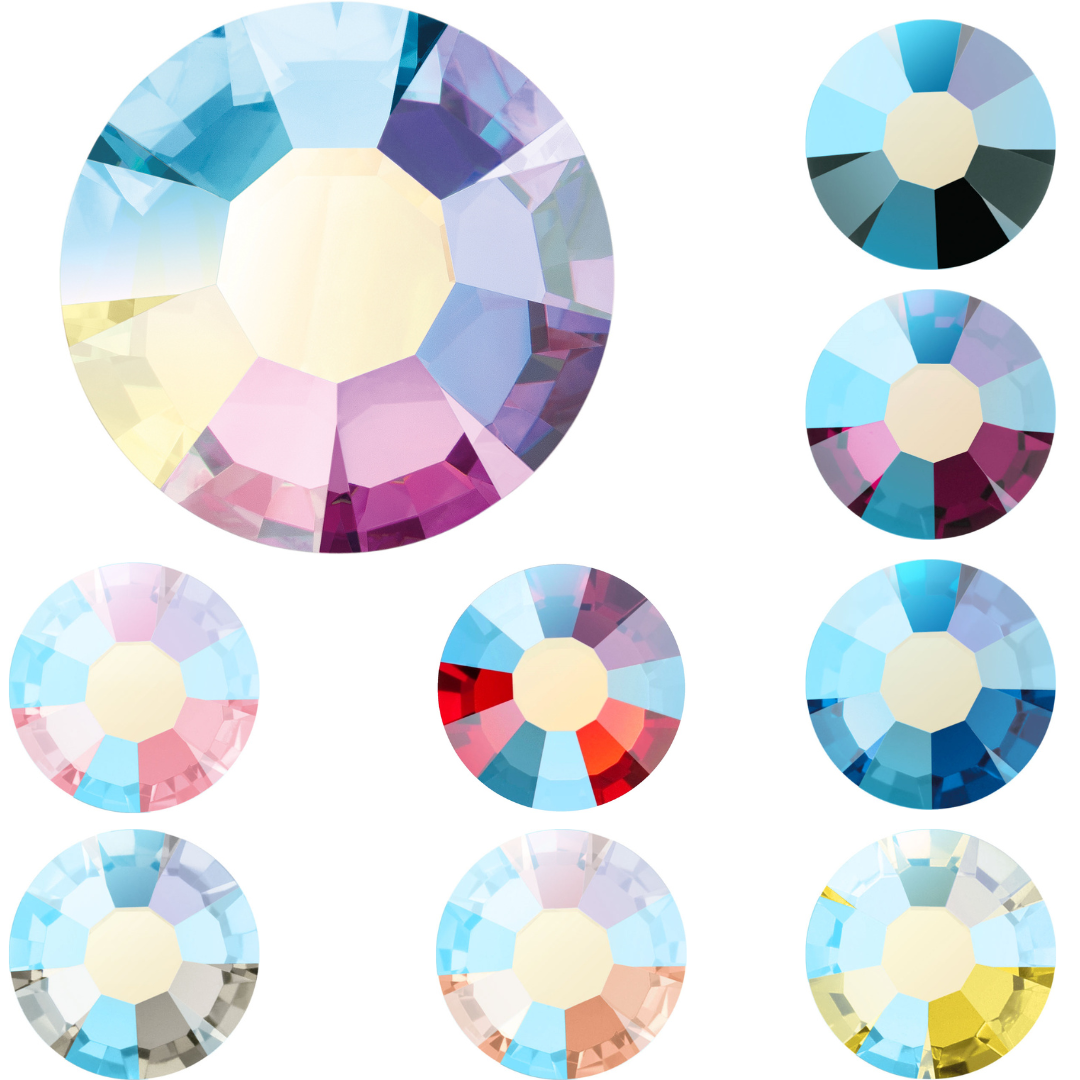
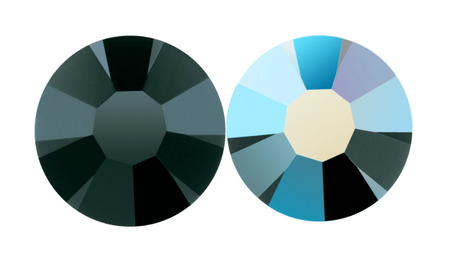
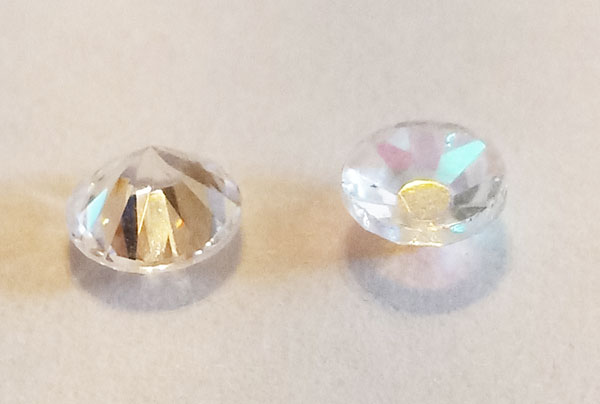
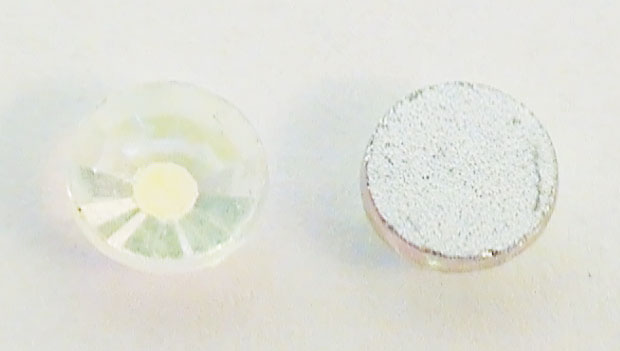
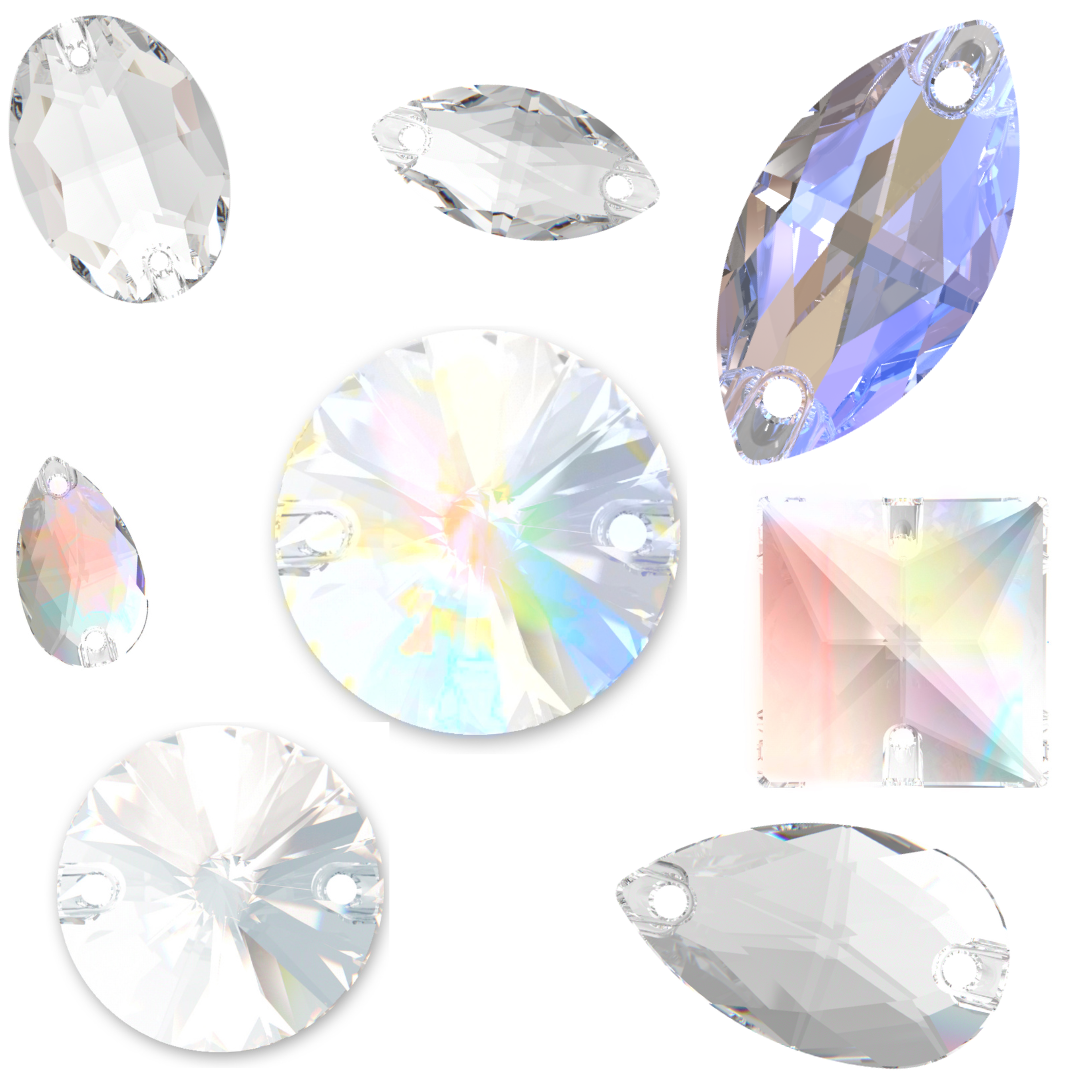
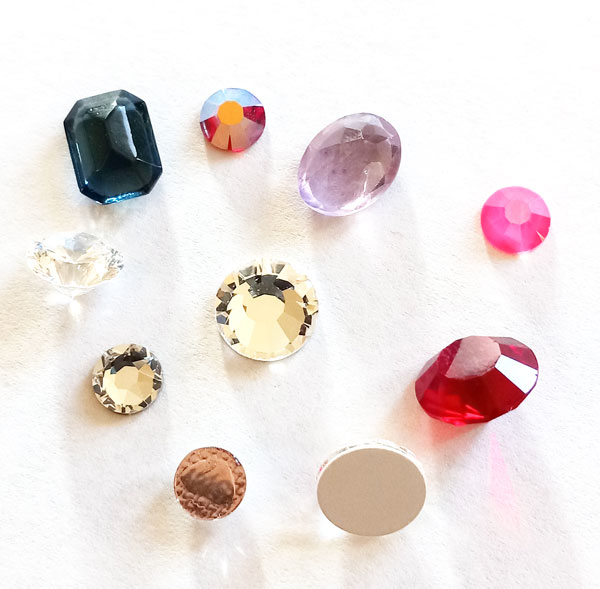
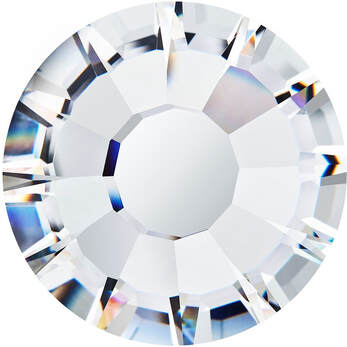
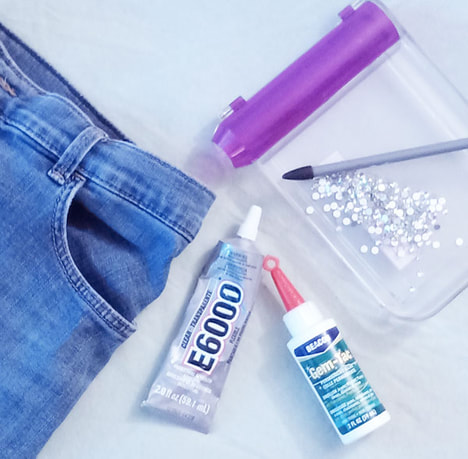
 RSS Feed
RSS Feed